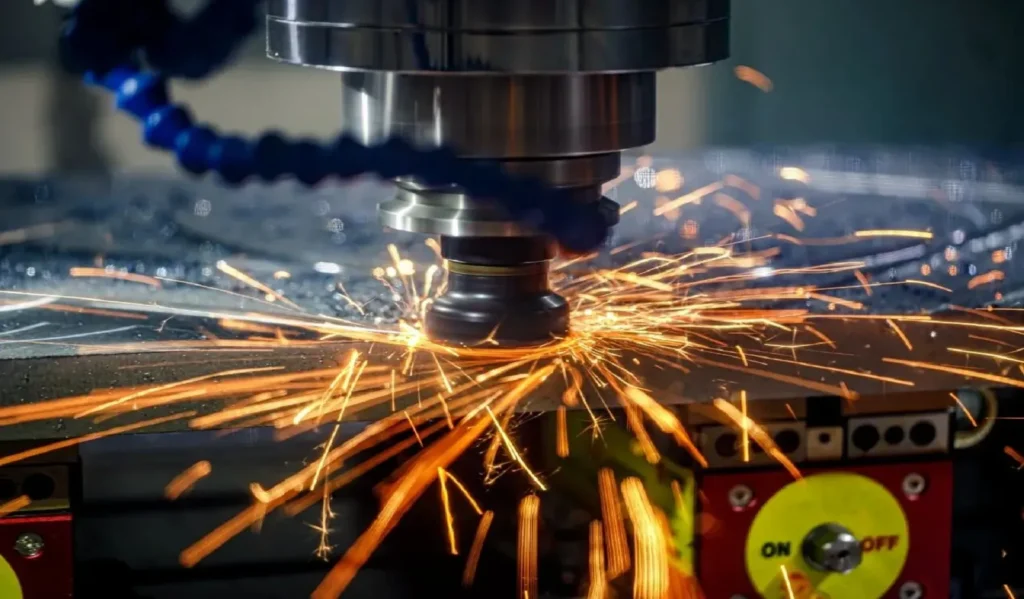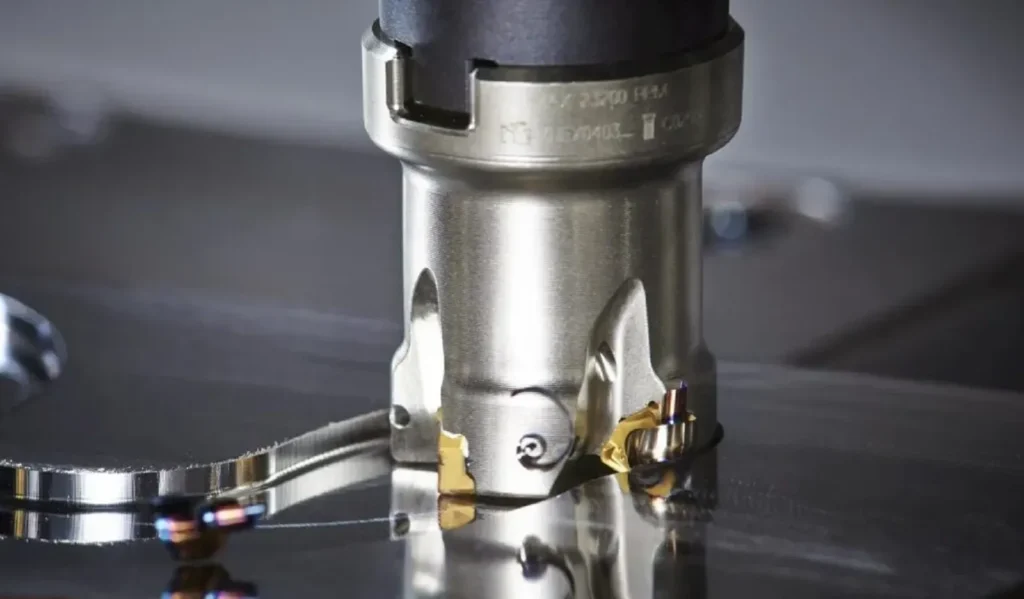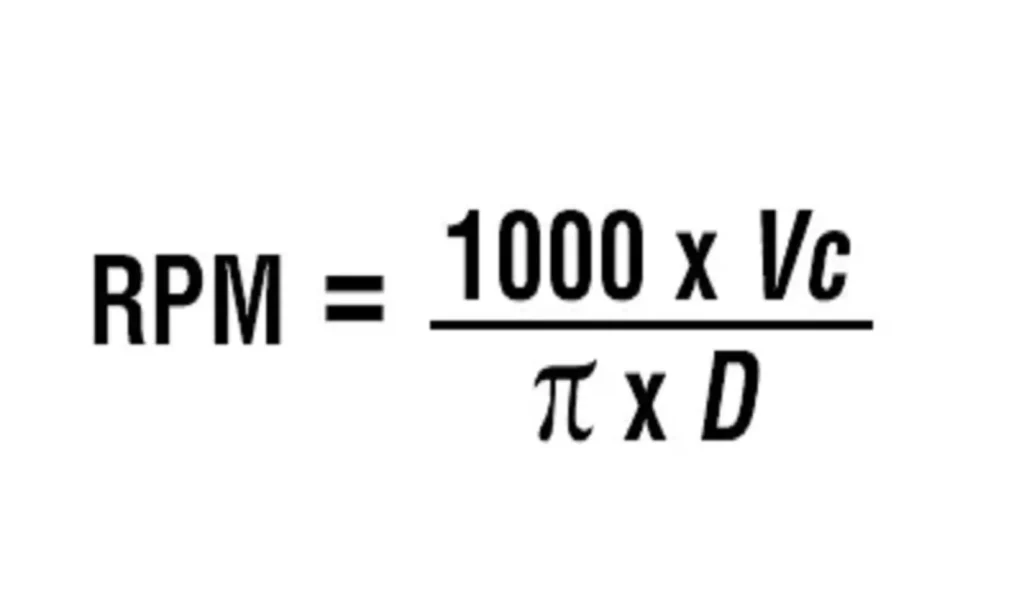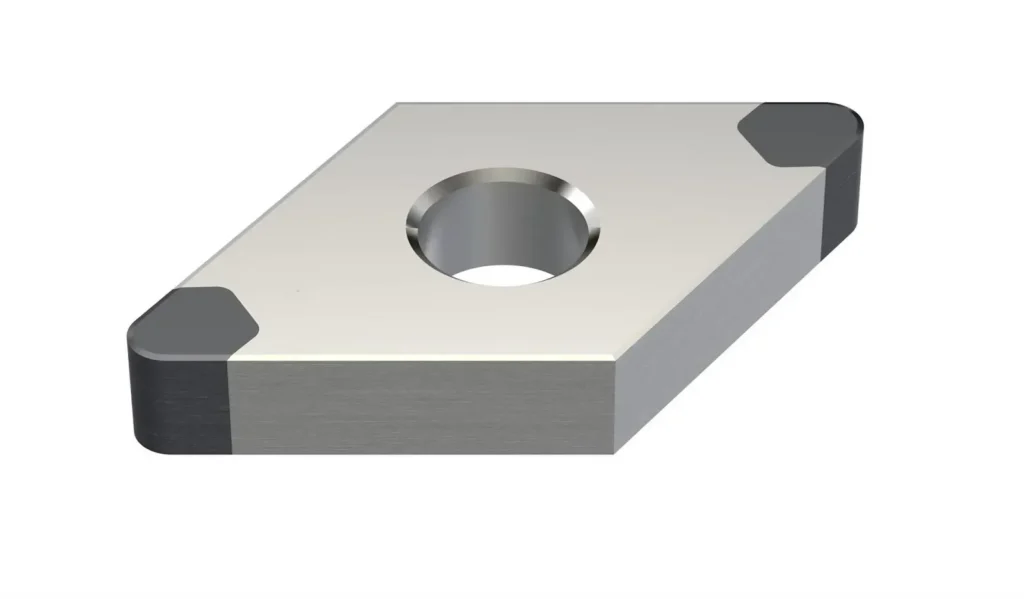В постоянно развивающемся мире производства и металлообработки точность и эффективность имеют первостепенное значение. Среди различных инструментов, которые произвели революцию в этой отрасли, сменные пластины занимают особое место. Эти небольшие, но мощные компоненты изменили наш подход к операциям резания, обеспечив беспрецедентную универсальность и экономическую эффективность. В этом подробном руководстве мы погрузимся в мир сменных пластин, изучим их типы, размеры, области применения и инструменты, в которых они используются.
Что такое индексируемая вставка?
По своей сути, индексируемая вставка(Токарная вставка、Фрезерная вставка、Учения、Сверло со сменным наконечником) - это сменная режущая кромка, используемая в различных операциях обработки. В отличие от традиционных цельных режущих инструментов, сменные пластины представляют собой отдельные детали, которые можно легко заменить или повернуть, когда одна режущая кромка затупится. Эта инновационная конструкция позволяет использовать несколько режущих кромок на одной пластине, что значительно продлевает срок службы инструмента и сокращает время простоя.
Индексируемые пластины обычно изготавливаются из современных материалов, таких как карбид, керамика или поликристаллический алмаз (PCD), каждый из которых обладает определенными преимуществами в зависимости от области применения. Эти пластины рассчитаны на высокие температуры и давление, что делает их идеальными для широкого спектра операций резания, от черновой до чистовой обработки.
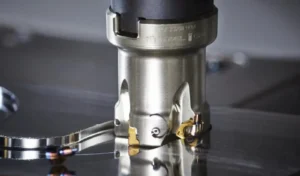
Эволюция индексируемых вставок
Концепция сменных режущих инструментов возникла еще в начале XX века, но широкое распространение в обрабатывающей промышленности они получили только в 1950-х годах. По мере развития материаловедения и технологий производства повышалось качество и разнообразие сменных пластин. Сегодня они являются неотъемлемой частью современной обработки, предлагая такие преимущества, как:
- Повышение производительности
- Уменьшение количества смен инструмента
- Улучшенная обработка поверхности
- Повышенная скорость резки и подача
- Снижение общих затрат на оснастку
Типы индексируемых вставок
Мир сменных вставок огромен и разнообразен, различные типы предназначены для удовлетворения конкретных требований к обработке. Понимание этих типов имеет решающее значение для выбора подходящей вставки для вашего применения. Вот некоторые из наиболее распространенных типов сменных вставок:
- Токарные пластины Токарные пластины используются в токарных операциях и бывают различных форм, включая алмазные, треугольные, квадратные и круглые. Каждая форма обладает различными режущими свойствами и подходит для конкретных токарных работ.
- Фрезерные пластины Фрезерные пластины предназначены для использования в фрезах и концевых фрезах. Они имеют различную геометрию, например, квадратную, круглую и восьмиугольную, каждая из которых оптимизирована для различных операций фрезерования.
- Вставки для сверления Эти вставки специально разработаны для операций сверления и часто используются в сочетании со сменными сверлами. Они отличаются повышенной производительностью и долговечностью по сравнению с традиционными спиральными сверлами.
- Резьбонарезные вставки Резьбонарезные вставки используются для создания внутренней и внешней резьбы. Они имеют различные профили для соответствия различным стандартам и шагам резьбы.
- Вставки для обработки канавок и разделения деталей Эти специализированные вставки используются для создания канавок или разделения заготовок при токарной обработке. Как правило, они имеют узкий профиль для минимизации отходов материала.
Размеры индексируемых вставок
Размеры сменных пластин играют решающую роль в определении подходящего инструмента для конкретной операции обработки. Размер пластины влияет на такие факторы, как глубина резания, скорость подачи и общая производительность инструмента. Размеры пластин обычно указываются с использованием стандартных названий, которые включают:(Ознакомьтесь с другими нашими статьями, чтобы узнать об особых правилах именования)
- Форма вставки: Обозначается буквой (например, C - ромб 80°, S - квадрат 90°).
- Угол рельефа: Обозначается буквой (например, токарная и фрезерная пластина C - 7°, N - 0°).
- Класс толерантности: Обозначается буквой (например, M для IC±0,05-±0,15).
- Код размера: Двухзначное число, обозначающее диаметр вписанной окружности пластины или длину режущей кромки( Например, круглая пластина 06 представлена 6 мм)).
Например, вставка, обозначенная как CNMG 120408, будет иметь форму алмаза 80° (C) с углом рельефа 0° (N), средний допуск (M) и код размера 120408 (12,7 мм внутренняя окружность, 4,76 мм толщина вставки и 0,8 мм радиус кончика вставки).
Понимание этих обозначений размеров очень важно для выбора подходящей пластины для конкретных задач обработки и обеспечения совместимости с держателями инструмента.
Для чего используется индексируемая концевая фреза?
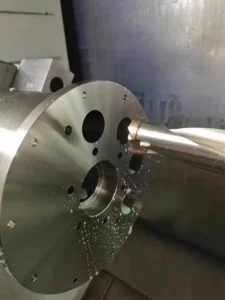
Индексные концевые фрезы - это фрезерные инструменты, которые могут использоваться для различных целей, включая черновая обработка, боковое фрезерование, контурная обработка и спиральная интерполяция. Благодаря большому диаметру и высокой скорости подачи они хорошо подходят для эффективного производства. Они также могут использоваться в тех случаях, когда требуется небольшая глубина реза (0,100″ или менее).
Сменная концевая фреза - это универсальный режущий инструмент, сочетающий в себе преимущества традиционных цельных концевых фрез и сменных пластин. Эти инструменты используются в основном для фрезерования и обладают рядом ключевых преимуществ:
- Экономичность: Хотя первоначальные затраты могут быть выше, в долгосрочной перспективе сменные пластины более экономичны. Когда одна режущая кромка затупится, вы можете просто повернуть или заменить пластину, а не заменять весь инструмент.
- Сокращение времени простоя: Замена или вращение вставки происходит гораздо быстрее, чем замена или перешлифовка цельного инструмента, что значительно сокращает время простоя станка.
- Постоянная производительность: Каждая новая режущая кромка обеспечивает стабильные, как новые, эксплуатационные характеристики, гарантируя неизменное качество всех серий.
- Универсальность: В одном держателе инструмента можно разместить пластины различных марок и геометрии, что позволяет быстро адаптироваться к различным материалам и условиям резания.
- Повышенный срок службы инструмента: Возможность использования нескольких режущих кромок на одной пластине увеличивает общий срок службы инструментальной системы.
- Более высокие скорости резания: Многие сменные пластины изготавливаются из современных материалов, способных выдерживать более высокие скорости резания, чем традиционные инструменты.
- Точность и повторяемость: Индексируемые пластины изготавливаются с жесткими допусками, что обеспечивает стабильные размеры и производительность резания.
- Управление запасами: Разнообразные пластины занимают меньше места, и ими легче управлять, чем запасами цельных режущих инструментов.
- Оптимизация материалов: Индексируемые пластины позволяют использовать высококачественные режущие материалы (например, карбид или керамику) только там, где это необходимо, что снижает общие затраты на материалы.
- Устойчивость: Возможность замены только режущей кромки, а не всего инструмента, способствует уменьшению количества отходов и более экологичной обработке.
Типичные области применения сменных концевых фрез включают:
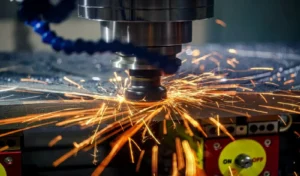
- Черновая обработка в тяжелых условиях
- Высокоскоростное фрезерование больших поверхностей
- Обработка труднообрабатываемых материалов
- Сложное профилирование и контурирование
- Фрезерование плеч и пазов
Универсальность и эффективность сменных концевых фрез делают их популярным выбором в различных отраслях промышленности, включая аэрокосмическую, автомобильную и общее производство.
Что такое индексируемый держатель инструмента?
Держатель сменного инструмента - это важнейший компонент процесса обработки, предназначенный для надежного удержания и позиционирования сменных пластин во время операций резания. Эти держатели выпускаются в различных исполнениях, чтобы соответствовать различным формам, размерам пластин и условиям обработки. Основные функции держателя сменного инструмента включают:
- Удержание пластины: Надежно удерживает пластину на месте во время высокоскоростных и силовых операций резки.
- Точное позиционирование: Обеспечивает правильное позиционирование пластины под нужным углом и глубиной резания для оптимальной производительности.
- Подача СОЖ: Многие держатели сменных инструментов оснащены внутренними каналами для подачи СОЖ, чтобы направлять ее точно к режущей кромке.
- Гашение вибрации: Некоторые современные держатели инструментов оснащены функциями, снижающими вибрацию, улучшающими качество обработки поверхности и срок службы инструмента.
- Возможность быстрой замены: Обеспечивает быструю замену вкладышей, что позволяет свести к минимуму время простоя станка.
Типы держателей для индексируемых инструментов
- Держатели токарных резцов: Используются в токарных операциях для наружного и внутреннего точения, торцевания и обработки канавок.
- Корпуса фрезерных фрез: Предназначены для установки нескольких пластин для торцевого фрезерования, фрезерования уступов и других операций фрезерования.
- Расточные бруски: используются для внутренней обработки, особенно при растачивании глубоких отверстий.
- Корпуса индексируемых сверл: Специально разработаны для установки сверлильных вставок для высокопроизводительной обработки отверстий.
- Держатели резьбонарезного инструмента: Разработаны для фиксации резьбонарезных пластин под правильным углом для точного нарезания резьбы.
Выбор правильного держателя сменного инструмента имеет решающее значение для обеспечения максимальной производительности сменных пластин и достижения оптимальных результатов обработки.
Максимальное повышение эффективности при использовании индексируемых вставок
Чтобы в полной мере использовать преимущества сменных пластин при обработке, обратите внимание на следующие передовые методы:
- Правильный выбор пластины: Выберите правильную марку, геометрию и размер пластины для конкретного материала и условий резания.
- Правильное сопряжение держателя инструмента: Убедитесь, что ваш сменный резцедержатель совместим с выбранной пластиной и обеспечивает необходимую стабильность и точность.
- Оптимальные параметры резания: Используйте рекомендованные скорости резания, подачи и глубины резания для обеспечения максимального срока службы и производительности пластины.
- Регулярное обслуживание: Регулярно осматривайте вставки и держатели инструментов на предмет износа или повреждений, при необходимости заменяйте или поворачивайте вставки.
- Управление охлаждающей жидкостью: Используйте соответствующие стратегии использования СОЖ для улучшения отвода стружки и продления срока службы пластин.
- Непрерывное совершенствование: Будьте в курсе новых технологий и марок пластин, чтобы постоянно оптимизировать процессы обработки.
Заключение
Сменные пластины произвели революцию в мире обработки, обеспечив беспрецедентную гибкость, эффективность и рентабельность. Понимая различные типы сменных пластин, их размеры и инструменты, в которых они используются, производители могут значительно улучшить свои операции резания. Независимо от того, выполняете ли вы высокоскоростное фрезерование с помощью сменной концевой фрезы или прецизионное точение с помощью специализированной пластины, правильное сочетание пластины и держателя инструмента может значительно улучшить результаты обработки.
По мере развития технологий мы можем ожидать дальнейших инноваций в конструкции и материалах сменных пластин, расширяющих границы возможного в области обработки металлов резанием. Оставаясь в курсе событий и принимая эти новшества, производители смогут сохранить конкурентоспособность в отрасли, требующей все больших усилий.
В чем разница между сменными концевыми и торцевыми фрезами?
Индексируемые концевые и торцевые фрезы отличаются друг от друга, прежде всего, конструкцией и областью применения. Торцевые фрезы - это цилиндрические инструменты, которые могут резать как в осевом, так и в радиальном направлении, что делает их универсальными для таких операций, как профилирование, пазование и контурная обработка. Они обычно имеют меньший диаметр и могут выполнять более глубокие пропилы относительно своего размера. Торцевые фрезы, с другой стороны, представляют собой дисковые инструменты, предназначенные в основном для фрезерования больших плоских поверхностей. Они имеют пластины, установленные на торце, и режут перпендикулярно оси инструмента, что позволяет выполнять более широкие резы и увеличивать скорость съема материала на плоских поверхностях. В то время как торцевые фрезы обладают большей универсальностью и точностью при обработке сложных геометрических форм, торцевые фрезы превосходно справляются с быстрым получением плоских и ровных поверхностей на больших площадях.
В чем преимущества индексируемых вставок?
Индексируемые пластины обладают многочисленными преимуществами при обработке, что делает их популярным выбором в современном производстве. Они обеспечивают экономическую эффективность благодаря возможности их вращения или замены при затуплении одной режущей кромки, что значительно сокращает время простоя по сравнению с заменой всего инструмента. Эти пластины обеспечивают стабильную производительность с каждой новой режущей кромкой, гарантируя неизменное качество на всех этапах производства. Их универсальность позволяет использовать в одном держателе пластины различных марок и геометрий, адаптируя их к различным материалам и условиям резания. Индексируемые пластины выдерживают более высокие скорости резания, увеличивают общий срок службы инструмента и обеспечивают точность благодаря жестким производственным допускам. Они также способствуют лучшему управлению запасами и устойчивому развитию за счет сокращения отходов. Все эти преимущества в совокупности повышают производительность, гибкость и эффективность процессов обработки в различных отраслях промышленности.
Что означает термин "индексируемый" в обработке?
В механической обработке термин "индексируемый" означает конструкцию режущего инструмента со сменными и вращающимися режущими кромками, обычно в виде небольших пластин точной формы. Этот термин означает, что режущие кромки могут быть "проиндексированы" или повернуты в новое положение, когда одна кромка изнашивается. Индексируемые инструменты позволяют операторам быстро менять или переставлять режущую кромку без замены всего корпуса инструмента. Такая конструкция имеет ряд преимуществ, включая увеличенный срок службы инструмента, сокращение времени простоя при его замене, стабильную производительность резания и экономическую эффективность. Возможность индексирования также означает, что на одном инструменте часто можно устанавливать пластины различных форм или марок, что обеспечивает универсальность для различных операций обработки и материалов. Концепция сменных пластин произвела революцию в современной обработке, повысив эффективность, сократив расходы на инструмент и увеличив общую производительность процессов металлообработки.
Что такое индексируемая концевая фреза?
Сменная концевая фреза - это универсальный режущий инструмент, используемый при фрезеровании и сочетающий в себе функциональность традиционных цельных концевых фрез с преимуществами сменных режущих пластин. Она состоит из цилиндрического корпуса инструмента с множеством карманов или посадочных мест, предназначенных для установки небольших режущих пластин точной формы. Эти пластины легко поворачиваются или заменяются при износе, что позволяет быстро менять кромку без замены всего инструмента. Индексируемые концевые фрезы могут выполнять различные операции фрезерования, включая торцевое, боковое, пазовое и профилирование. Они обладают такими преимуществами, как снижение затрат на оснастку, стабильная производительность резания и гибкость при использовании различных марок или геометрий пластин в одном корпусе инструмента. Такая конструкция делает сменные концевые фрезы особенно эффективными при обработке тяжелых грузов, при работе с трудными материалами и в задачах, требующих высокой скорости съема материала при сохранении эффективности и точности.
Что уникального в сверлах со сменными пластинами?
Сверла со сменными пластинами - это уникальные режущие инструменты, которые обладают рядом преимуществ при сверлении. В отличие от традиционных цельных сверл, эти инструменты имеют корпус со сменными режущими пластинами, обычно расположенными на кончике и внешних кромках. Такая конструкция позволяет быстро и легко заменять изношенные режущие кромки без замены всего сверла, что значительно сокращает время простоя и расходы на инструмент. Сверла с индексируемыми пластинами часто обеспечивают превосходный отвод стружки благодаря специально разработанным канавкам и внутренним каналам для охлаждающей жидкости, что повышает производительность при сверлении глубоких отверстий. Они отличаются универсальностью, позволяя использовать различные марки и геометрию пластин для оптимизации резания для различных материалов и условий. Эти сверла обычно достигают более высоких скоростей резания и подачи по сравнению с обычными сверлами, что повышает производительность. Кроме того, возможность точной настройки положения пластин позволяет точно контролировать диаметр и прямолинейность отверстия, что делает сверла со сменными пластинами особенно ценными для высокоточных применений в таких отраслях, как аэрокосмическая и автомобильная промышленность.
